
Beekeeping for Beginners
You do not need to be an expert to keep bees. Anyone who enjoys the outdoors can become successful at keeping bees. If you live in the city you can keep a hive or two on your deck or rooftop.
Come into Buckerfield's to get all the information and supplies you need to become a successful beekeeper. We can show you how!
Tending bees is like a lot like taking care of a garden. There is a flurry of activity in spring, maintenance in summer and harvesting the crop in the fall.
No matter where you live the honey bee season follows the growing season. Once the weather warms in the spring and the plants start to bloom, the honey bees will begin flying, foraging and collecting nectar and pollen. Soon the honey will begin to flow!
Beekeeping used to be about gathering honey for food, now it is about pollinating your fruits, flowers and vegetables, so you can grow food.
With the shortage of honeybees, some owners rent their hives for crop pollination, and then harvest the honey, proving bees are a very important part of our environment.
The agenda of a honey bee colony is to reproduce itself and survive the next winter. The colony must reproduce as early as possible in the season to allow the new bees enough time to make a nest, forage for food, and store food for the colonies winter needs.
Interesting Bee Facts
-
Honey bees live together in a colony that could have up to 60,000 bees. But have only one queen bee.
-
Bees will protect themselves when disturbed, by stinging.
-
Many beekeepers have bee hives in their back yards and some are even kept on city roof-tops.
-
Bees can travel several miles to collect nectar and pollen, so they do not need flowering plants close by.
-
A single bee can produce more than 45 kg of honey.
-
It only takes one colony of bees to pollinate an acre of fruit trees.
-
Honey bees flies up to 24 km per hour and its wings beat 200 times per second.
-
One queen bee could lay 2,000 eggs per day.
-
A worker bee gathers 0.8 grams (0.0288 ounce) of honey in her lifetime.
-
It requires 556 worker bees to produce a pound of honey.
-
Bees fly once around the world to gather one pound of honey.
-
The average life of a honey bee during the working season is about six weeks.
-
Honey is one of the safest foods as bacteria cannot live in honey for any length of time.
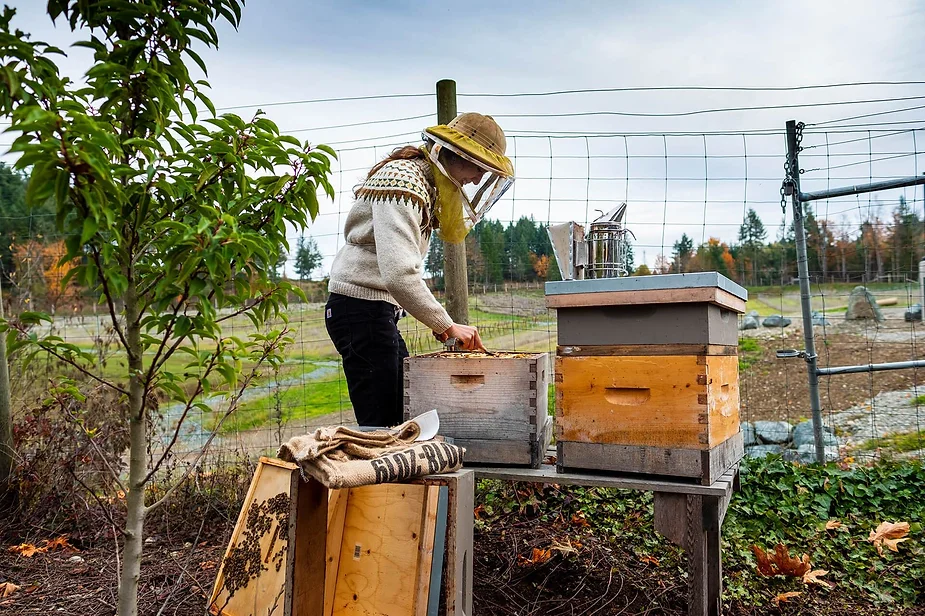
Choosing an apiary site
In choosing an apiary site the beekeeper must be mindful of his neighbors. Most people are afraid of stinging bees, and hives should be located in an out of the way place that doesn’t attract attention from neighbors, motorist or pedestrians.
-
Bees do best placed in a location that is close to a water supply, gets the morning sun, some afternoon shade and kept out direct wind. In the winter the colonies should have all day sun.
-
Do not locate near any crops that require chemical spraying. Check the location carefully, taking into consideration the vulnerability of bees to toxic sprays.
-
Avoid isolated locations where the hives could be vandalized or stolen.
-
An electric fence will deter predators like bears.
What is the average life span of a honeybee?
There are 3 kinds of honeybees found in a hive, the queen, workers and drones.
-
The queen, spends her entire life laying eggs, and has an average life span of 2 – 3 years. Queens should be replaced at the first signs of failing performance or loss.
-
A drone that is successful in mating with a queen will die during the act, whatever its age. In the autumn, all drones are dragged to the hive entrance by the workers and thrown out, and they die. This is because they have no purpose over the winter, do no work and would be a drain on hive resources. New drones are produced in the spring.
-
Worker bees do everything else, from feeding larvae, cleaning the nest, guarding and defending the hive and gathering nectar to make honey. They have an average life span of 4 – 5 weeks during the summer months when they are most active. In the fall and winter, workers will live for several months because they are less active.
Clothing
Beekeeping with the right kind of protective clothing and tools is quite safe once you get used to the fuzzy little guys. Purchase the right kind of clothing for protecting yourself from bees.
-
Full covered suits cover your entire body and are elasticized at the wrists and ankles to keep the bees out of places where they could sting.
-
The bee helmet, or hat, has netting to cover your face and zips onto the suit.
-
You will gloves with long cuffs attached, and boots for protection.
-
Elastic straps are easy to use and keep bees out of the tops of your boots and the bottom of your pants.
Beekeeping equipment to get started
Buckerfield’s can supply you with the equipment and knowledge you will need to establish bees and expand your apiary. We can customize your bee hives to suit your needs!
The hive should be assembled, painted and placed in its permanent location before you get your bees. Here are some basic items you will need to get started.
For a standard 10 frame hive you will need:
- Screened bottom board
- Entrance block
- Outside cover
- Inside cover
- Foundation
- Two medium depth supers
- At least two assembled brood chambers
- Queen excluder
- Mouse guards for the front door of hive
- Bee suit with elastic at cuffs and foot openings
- A bee veil
- Gloves
- A bee smoker and smoker fuel
- Hive stands
- Hive tool for prying apart the hive and frame
- Feeder to feed bees sugar water
- Bee brush
- Beginner’s book on beekeeping
- Honey bees and a queen
What are brood chambers and supers?
To start your hive you will need a brooding chamber and supers.
-
The brooding chamber is the lower box where the queen lays her eggs, which the workers feed and keep clean.
-
The supers are frames with a hive-like, wax pattern on the bottom on which the workers will build honeycombs to hold the honey.
-
Honey supers are the boxes ABOVE the brood boxes usually separated by a queen excluder where the worker bees store the bulk of the honey.
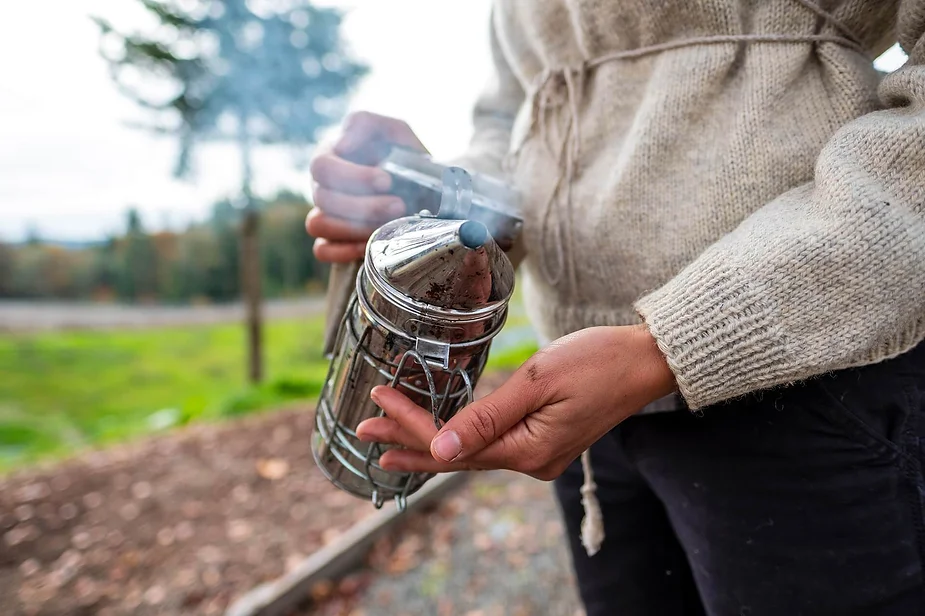
What does smoke do to the bees?
When working with bees wear a protective suit and use a smoker to help subdue them.
-
Smoke calms the bees down and stimulates the feeding instinct.
-
It blocks the smell of the danger pheromone given out by the guard bees. This will allow you to remove full supers and check the bees in the brooding chamber without exciting them.
Winter protection
Make sure the hive is protected from strong winter winds and is exposed to southern sun for warmth if you live in a cold area. Starvation, cold, dampness, mites and nosema, all make winter survival within the hive difficult.
-
The bees keep from freezing by forming a swarm around the queen in the lowest chamber.
-
By shivering and moving constantly, they keep the temperature at approximately 80 degrees and will not freeze unless it is a particularly long or cold winter.
-
Each hive needs about 90 pounds of honey or one super full of honey to survive a winter depending on winter intensity and length.
Why do I need to feed my bees?
The goal of every beekeeper raising a honey crop is to have the largest number of bees possible in the hive. Early brood rearing is the key to achieving optimal numbers.
A hive must have a source of carbohydrates (nectar, honey, or sugar syrup) and a source of protein (pollen). They must have both of these to begin raising a brood of bees.
There are long intervals in the year that no nectar is available and a supplemental feed is needed.
-
Feed your bees supplements in the spring to get them started. These include pollen supplements or sugar and water.
-
To make syrup, mix equal parts of granulated sugar and water in the spring. In fall use 2 parts sugar to 1 part water. Dissolve in hot water and let cool before putting in a syrup feeder.
-
This will give them nourishment until the flowers and trees begin to bloom. Then the workers will be able to go out and collect nectar to bring back and store in the supers and wax cells they have built.
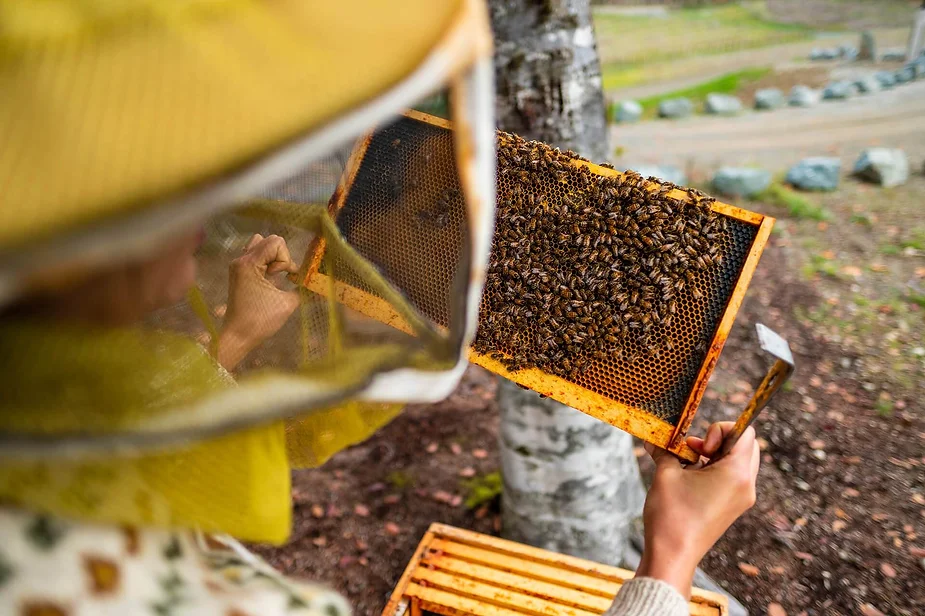
How queen bees mate
A virgin queen will leave the hive on a mating flight about a week after she emerges from the brood cell.
-
She will emit a mating pheromone that attracts drones from the surrounding area.
-
Copulation with a single drone only takes a matter of a few seconds. The successful drone dies in the act of mating.
-
The queen will mate with between ten and 20 drones.
-
The queen will then return to the hive and will not leave it again except, perhaps, with a swarm.
-
The stock of sperm in her spermatheca will last her for her entire productive life.
The life of a bee from egg to adult
Bees engage in complete metamorphosis, egg, larva, pupa, and adult. From egg to adult takes 21days for a worker, 24 days for a drone and 16 days for a queen.
-
The queen deposits an egg singly in the bottom of a beeswax cell.
-
The egg is 1/16 inch in length and hatches after three days into a larva. The larva, consume food placed in its cell by a worker bee.
-
When the feeding phase is over the larva enters the intermediate stage known as the prepupa. Worker bees cap the cell with beeswax, and internal changes begin, which result in the prepupa’s transformation into a white pupa. This only takes a few hours.
-
The pupa looks superficially like an adult. There is no pigmentation, hair or wings and little or no movement.
-
In the remaining days of development, the pupa darkens gradually and develops hair and wings and after a few days chews through its cell capping and emerges as an adult bee.
How does a bee carry nectar and pollen?
To carry liquid loads of water or nectar, workers suck up liquids into the first chamber of a three chambered stomach, and regurgitate their loads back into the nest.
On their hind legs they have a structure called the pollen basket in which they carry pollen loads.
How to raise a Queen bee
Any female egg has the potential to develop into either a queen bee or a worker bee depending on the diet the larva first receives after it hatches.
Worker bees lick and groom the queen, pick up her pheromones and pass them onto other workers. These chemicals also stimulate foraging, prolong the workers life, and coordinate swarms during colony reproduction.
-
If the colony wishes to raise a queen bee, nurse bees choose female larvae, and feed them a special glandular secretion called royal jelly. This triggers development of queen like characters such as full sized ovaries, the ability to mate and store sperm, and glands for producing queen pheromones.
-
The larva must be fed a diet of royal jelly, uninterrupted within a few hours of hatching.
-
Within the first two weeks of life, on their mating flight, the newly emerged queen mates with up to twenty drones. She stores the sperm in an organ called the spermatheca, where she can release or hold sperm. Withholding sperm produces a male and fertilizing sperm produces a female. 1500 eggs a day can be laid by one queen bee. Busy girl!
-
Queen honey bees have long, tapered abdomens and are larger than workers or drones.
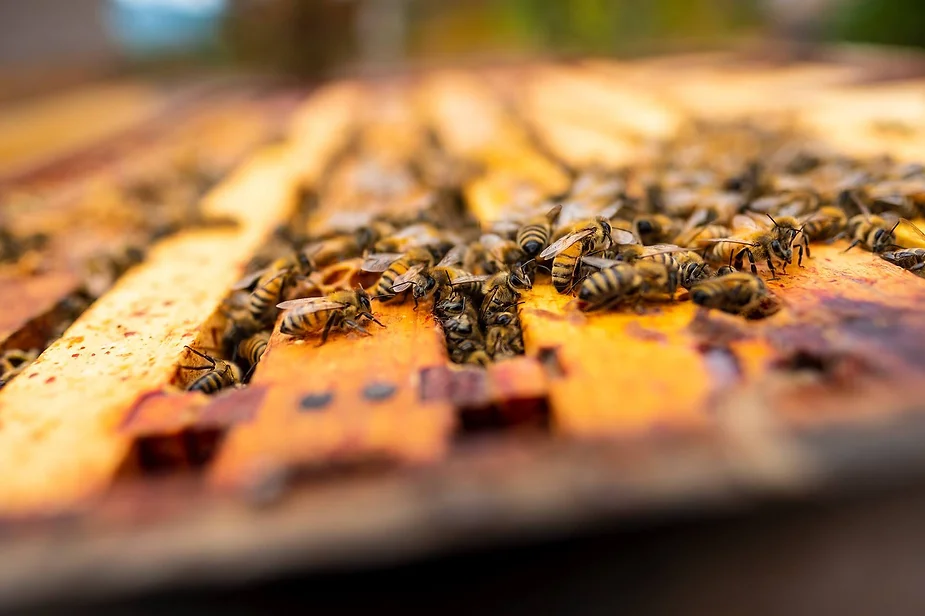
Bee stings
When a honey bee stings, its stinger, the poison sac and other parts of the bee’s body are destroyed, and the bee dies. While a honey bee sting may appear mild, one should consider treatment immediately.
The symptoms can gradually increase if the stinger is not removed quickly. To remove the stinger, use a flat object or blunt knife to scrape the affected area of the skin clean.
Honey bee stings are known to be very painful, but the symptoms that result from a sting vary depending on the amount of poison that has entered the immune system of the victim.
Some individuals may experience visible signs including, swelling, itching, and redness of the skin around the sting. Other people may be allergic to the bee’s venom and will experience such severe side-effects as nausea, fainting and, in extreme cases, death. Seek medical attention immediately.
A cold compress can lessen the pain and ease the swelling and itch experienced after a honey bee sting. If redness persists, it is advisable to take an over-the-counter pain reliever or antihistamine to reduce allergic reaction.
If symptoms persist or worsen, contact your doctor or emergency medical services.
Here are some tips to avoid getting stung.
- Work in the hive during good weather when the bees are out gathering nectar.
- Wear protective gear and light colored clothing.
- Use a smoker when working with the bees.
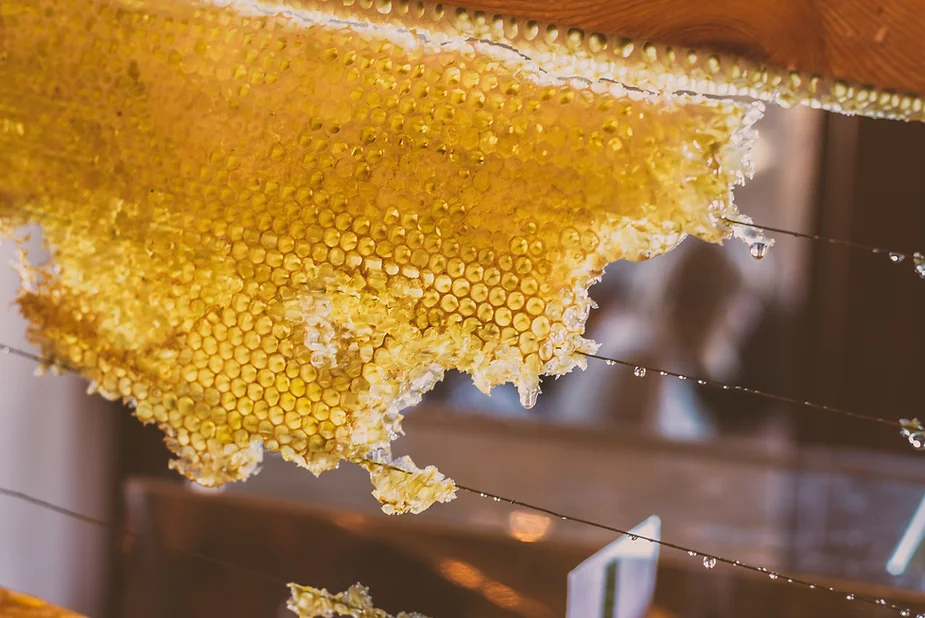
How bees make honey
Honey bees collect pollen and nectar in the spring when most flowers and plants are in bloom.
-
They use their long tongues like straws to suck the nectar out of the flowers and they store it in their stomachs and carry it to the beehive.
-
While inside the bee's stomach the nectar mixes with enzymes produced by the bees, converting the nectar into honey.
-
The bees then seal the honey into cells of the honeycomb. These hexagonal cells are made of wax produced by the bees, and repeat the process until the combs are full.
-
When this is done, the bees cap the honeycomb with wax and move on to the next empty comb, starting all over again.
Beekeepers provide their bees with honeycomb foundations made of sheets of beeswax. They fit into the hive frames and enable the bees to speed up comb construction.
What is beeswax?
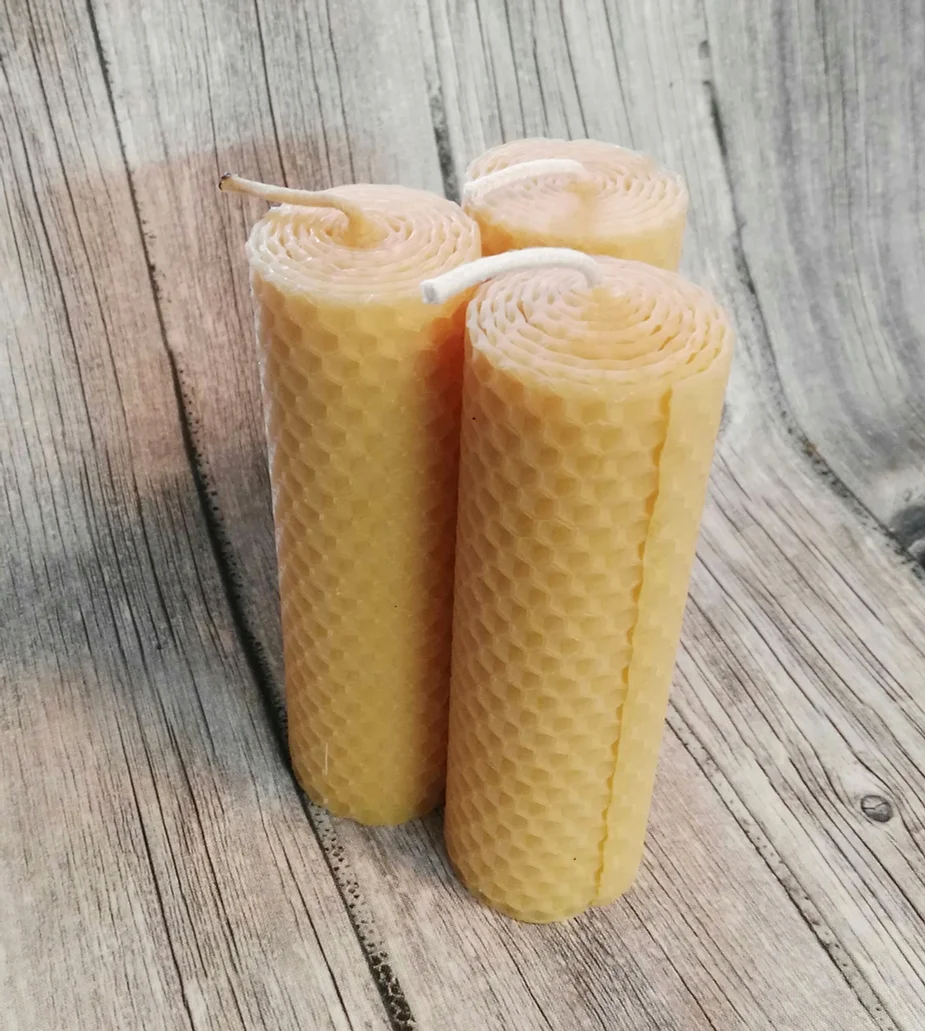
Not only can you harvest honey from your bees, you also get valuable beeswax.
-
Young bees about 12 days old have active wax glands on the underside of their abdomens. These glands produce droplets of liquid wax which harden on contact with air. Bees then chew this wax to soften and mold into honey comb.
-
Pure beeswax is made from the honey and pollen bees consume.
Other items that can be harvested include – pollen, propolis, and even the prized royal jelly!
Have more questions? Visit your local Buckerfield's and we'll be happy to help!



